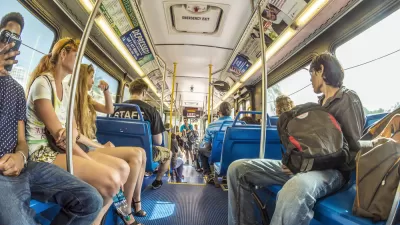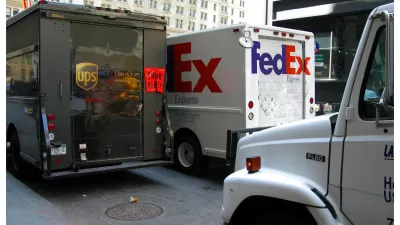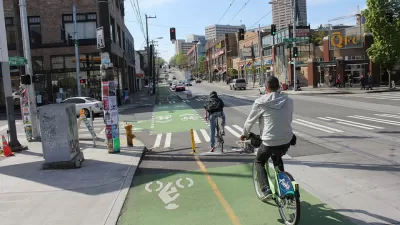Research from the Global Commission on the Economy and Climate recommends an emissions reduction program that might pay off big in the long term. Inter-city exchange and transit planning are key strategies.

According to a report from New Climate Economy, "Investing in lower-emission public transport, using more renewable energy, and increasing efficiency in commercial buildings and waste management in cities across the globe could generate $17 trillion in savings in current dollars by 2050."
"[Author] Nick Godfrey said the report—the first global analysis of projected savings from carbon reductions in cities—is intended to influence decisions at the climate summit in Paris in December." Godfrey stresses the importance of meaningful inter-city cooperation and real efforts to embrace transit and bikes.
Policy and investment decisions in major cities may set the tone for society at large. From the article: "The leading place of cities in today's world led the report to note that 'the infrastructure investments made in cities over the new few decades will lock the world into a higher- or lower-carbon path.'"
The report also discusses the short-term drawbacks of cleaner, more compact cities. "The resulting artificial shortage of land for building forces housing prices up, makes housing unaffordable for some, and leaves everyone with less money for other things, throwing some into poverty and causing income inequality to rise."
FULL STORY: Hidden Advantages of Lower-Carbon Emission Cities: $17 Trillion in Possible Savings

Planetizen Federal Action Tracker
A weekly monitor of how Trump’s orders and actions are impacting planners and planning in America.

Chicago’s Ghost Rails
Just beneath the surface of the modern city lie the remnants of its expansive early 20th-century streetcar system.

San Antonio and Austin are Fusing Into one Massive Megaregion
The region spanning the two central Texas cities is growing fast, posing challenges for local infrastructure and water supplies.

Since Zion's Shuttles Went Electric “The Smog is Gone”
Visitors to Zion National Park can enjoy the canyon via the nation’s first fully electric park shuttle system.

Trump Distributing DOT Safety Funds at 1/10 Rate of Biden
Funds for Safe Streets and other transportation safety and equity programs are being held up by administrative reviews and conflicts with the Trump administration’s priorities.

German Cities Subsidize Taxis for Women Amid Wave of Violence
Free or low-cost taxi rides can help women navigate cities more safely, but critics say the programs don't address the root causes of violence against women.
Urban Design for Planners 1: Software Tools
This six-course series explores essential urban design concepts using open source software and equips planners with the tools they need to participate fully in the urban design process.
Planning for Universal Design
Learn the tools for implementing Universal Design in planning regulations.
planning NEXT
Appalachian Highlands Housing Partners
Mpact (founded as Rail~Volution)
City of Camden Redevelopment Agency
City of Astoria
City of Portland
City of Laramie





























